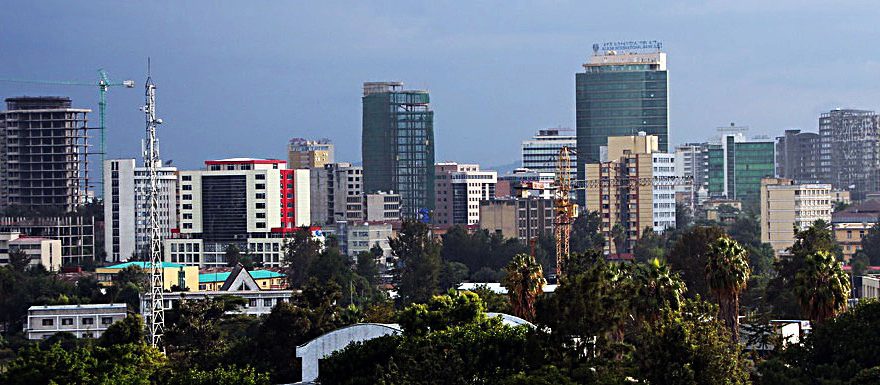
The universal economic account model concepts and tools are used to define what is to be measured and how the national economy is measured. The conceptual framework in the international guidelines serves as the universal model of the national accounts. It indicates in general terms how national accounts statistics should describe the national economy.
Following the national economic agenda, cities generally across the world and particularly in Ethiopia are supposed to prepare their own working plan in order to increase their economy. Addis Ababa City, being a capital of Ethiopia and Africa as well is among the capital cities that is making remarkable change on different aspects.
Indeed, Ethiopia’s exciting capital city, Addis Ababa is not just one of the most vibrant and eclectic cities in the country, it is often referred to as the capital of Africa. With a vision to see Addis Ababa flourish into a safe, livable, and prosperous city by 2030, the city administration is working on different political and economic reforms.
The Addis Ababa City Administration Plan and Development Commission announced that city’s economy has grown by 10.04 percent from the 2015/16 to 2019/20 fiscal years, realizing comprehensive development plans foreseeing the city as ‘Africa’s Prosperity Hub’.
Speaking to The Ethiopian Herald, Commissioner Meskerem Mitiku (PhD) said that the commission is working admittedly to achieve its five and ten years prosperity road maps which are parts of the ten years national perspectives plan.
According to her, the commission jointly with the city administration has performed different result based activities so as to increase the city’s economy, despite many challenges including the COVID-19 pandemic through the past fiscal years.
Mentioning that there are many problems that were turned down from the last three decades, 76 percent of the total 10.04 percent economic growth was achieved through the service sector while the reset 22.7 and 0.8 percent were from industry and agriculture respectively.
She also underlined that the commission is working exhaustively in order to build prosperous city that can be computing with the developed cities across the world. “As the time demands of being active participant in using of modern technologies, we are documenting all the necessary information electronically,” the commissioner asserted.
Fitihawek Metaferia, Urban Research and Capacity Building Directorate Team Leader, for his part stated that the city’s GDP is approximated to account for about 32 percent share of the National GDP in terms of ‘Non- Agricultural’ sectors. Besides, industry and service sector shares are expected to be 18 and 40 percent respectively.
While presenting his research on the occasion that the commission has conducted recently, he explained that cities and metropolitan areas serve as engines of economic growth and prosperity for developing countries and have become primary providers of service. Accordingly, it is significant to increase cities’ economic growth, he mentioned.
As to him, the real Gross City Product (GCP) tries to make adjustments for changes due to price levels or inflation to portray the real change due to changes in level or volume of outputs. In line with this, during 2019/20 fiscal year, the size of the city’s economy has registered ETB 571 billion as per the current market price, he added.
He also elucidated that about 98 percent of the city’s total revenue is collected from domestic sources where ‘tax revenues’ claimed about 79.7 percent. Revenue effectiveness ratio is commonly used to measure the ability of local governments in realizing the planned revenues compared to the targets set by the real potential of the area.
As a result, the overall average receipt (effectiveness level) mobilized from its domestic sources has been reached 83.7 percent- of which, the effectiveness in domestic revenue collection has been reached 87.4 percent, external assistance 40.7 percent and external loan 16.5 percent.
Besides this, he further explained tax-to-GDP ratio has been 27.5 percent (including tax revenue collected by the Federal Government). While the level of GCP and per capita income tax revenue has been growing by 15.5 and 9.6 percent respectively, tax-to-GDP ratio has been declined at an average rate of -1.7 percent; posing an important policy questions relating to the associated reasons and measures to curbing the situation.
Getachew Haile, the Commission’s Urban Study, Information and Capacity Building Deputy Commissioner also stated that Addis Ababa as the capital city of Ethiopia and a diplomatic center for international relations, is taking an important attention by all stakeholders nowadays.
Foreseeing the city as ‘Africa’s Prosperity Hub’, the commission stands at the forefront as a core institution to lead and realize comprehensive development plans. One of the important factors towards realizing such a vision is to manage policies and development plans through knowledge and information.
As a reflection of its commendable attributes to serve the local government and the citizens as well, the commission is striving to support all its stakeholders and beneficiaries in their efforts to achieve their respective goals through the provision of timely and analytical data/information, he said.
Capital cities and metropolitan areas are widely considered as growth centers and focus areas for economic, social, environmental and technological concerns- both from international and national perspectives, he noted. Accordingly, the commission in collaboration with the government and other stakeholders is working hard to boom the city’s economy.
According to a document from the World Bank, the city is in the middle of a construction boom with lots of new skyscrapers, roads and making it look like a construction site. It is growing rapidly in modernity compared to other African cities and the skyline suddenly has more halfway-done high-rise buildings than ever before, as well as new hotels being built at a breakneck speed.
Moreover, Hotels, shopping centers and office complexes rise from where small shacks once stood. Addis Ababa’s construction boom funded both from private and public coffers are being driven by the country’s recent rapid economic growth. And the government hopes it will attract further investment and help industrialize the economy so Ethiopia can reach middle-income status by 2025, the document stated.
Apart from adopting different technologies, the commission also unveiled different working guidelines and manuals coupled with conducting different result based researches regarding the spatial and socio economic sectors, the officials underlined.
Moreover, they reaffirmed that the commission will extend its commitment in scaling up its public servant ship and call up for due collaboration towards realization of the booming the city’s economy in a way to bring national growth. BY HIZKEL HAILU
The Ethiopian Herald 29 May 2021





